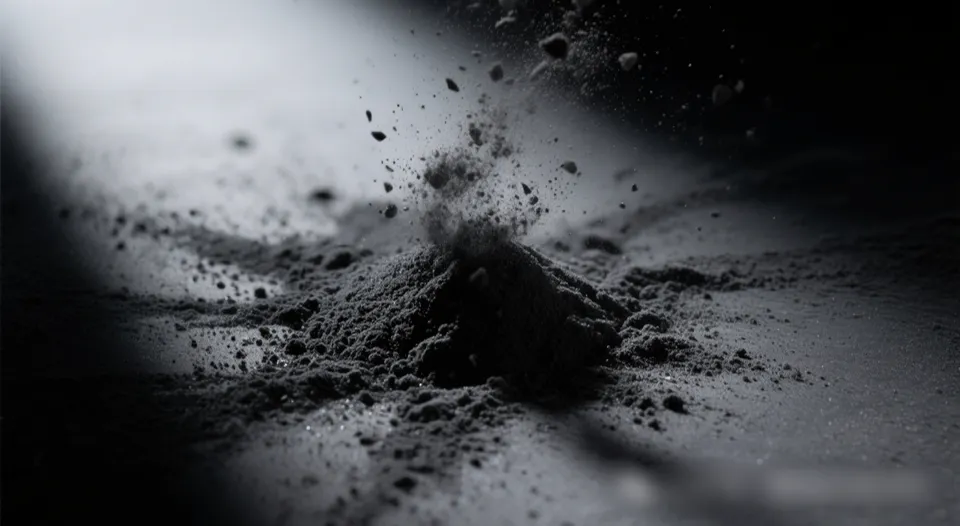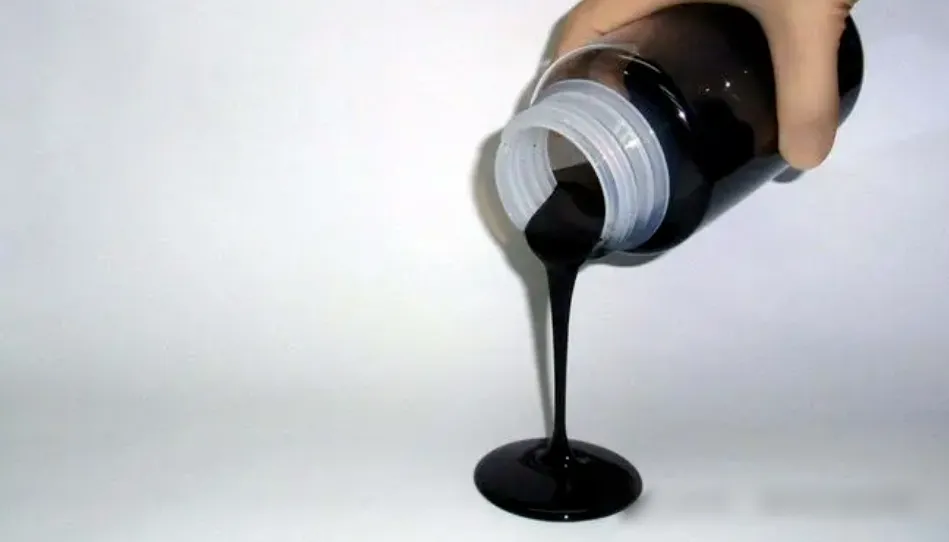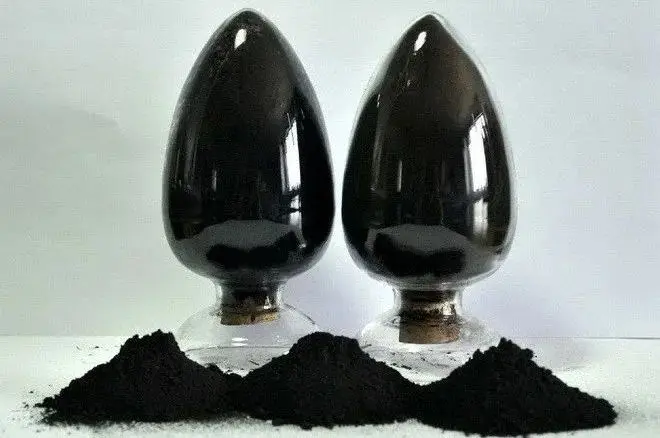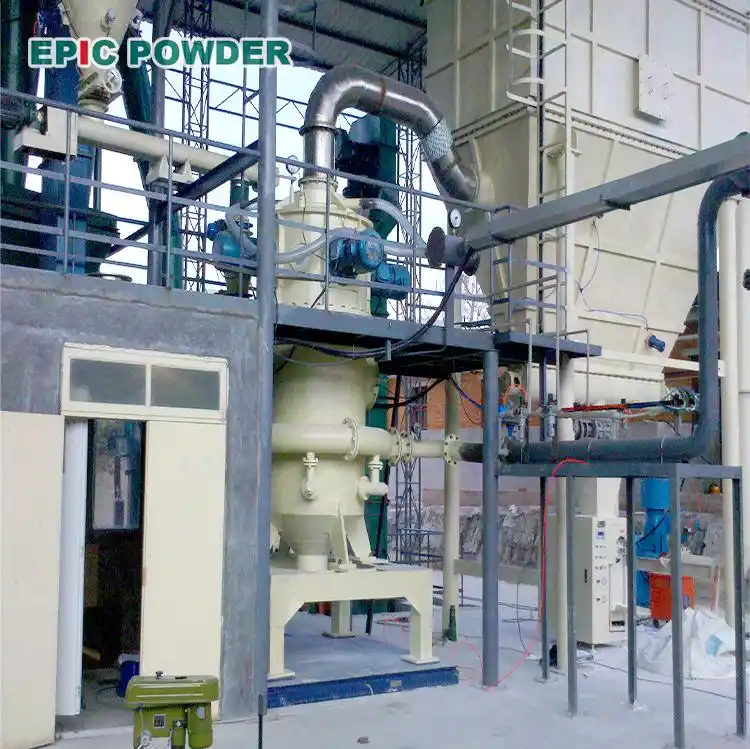Τα εργαστηριακά στοιχεία λιθίου-ιόντων σε σχήμα νομίσματος χρησιμοποιούνται από ερευνητές για ταχείες ηλεκτροχημικές δοκιμές απόδοσης νεοσυντιθέμενων υλικών καθόδου, υλικών ανόδου ή νέων ηλεκτρολυτών/προσθέτων. Τα χαρακτηριστικά τους, όπως η ταχύτητα, το χαμηλό κόστος και η τυποποίηση, έχουν προωθήσει σημαντικά την πρόοδο της τεχνολογίας των μπαταριών λιθίου-ιόντων. Ωστόσο, κατά το στάδιο της προετοιμασίας του πολτού των στοιχείων νομίσματος, η δυσκολία διασποράς της αγώγιμης αιθάλης (όπως το Super P, η ακετυλενική μαύρη κ.λπ.) λόγω της μεγάλης ειδικής επιφάνειας, της υψηλής επιφανειακής ενέργειας και της τάσης συσσωμάτωσης, είναι ένα κοινό και απαιτητικό πρόβλημα.
Αυτό οδηγεί σε ανομοιόμορφο πολτό, κακό σχηματισμό αγώγιμου δικτύου. Τελικά επηρεάζει την αγωγιμότητα του ηλεκτροδίου, τη μηχανική αντοχή και την ηλεκτροχημική απόδοση της μπαταρίας. Οι κύριοι λόγοι για τη δύσκολη διασπορά του μαύρου άνθρακα και τις αντίστοιχες λύσεις είναι οι εξής:
1 Φυσικά και Χημικά Χαρακτηριστικά του Μαύρου Άνθρακα
Τα σωματίδια αιθάλης είναι εξαιρετικά λεπτά, έχουν τεράστια ειδική επιφάνεια και πολύ υψηλή επιφανειακή ενέργεια. Υπάρχουν ισχυρές δυνάμεις van der Waals μεταξύ των σωματιδίων, καθιστώντας τα ιδιαίτερα επιρρεπή σε συσσωμάτωση σε σκληρά συσσωματώματα που είναι δύσκολο να διασπαστούν. Η επιφάνεια των περισσότερων αιθάλης είναι υδρόφοβη, με αποτέλεσμα κακή συμβατότητα με συνήθως χρησιμοποιούμενους πολικούς διαλύτες (όπως η NMP) και δυσκολία διαβροχής από τον διαλύτη, γεγονός που προκαλεί συσσωμάτωση σωματιδίων. Τα σωματίδια αιθάλης συνήθως σχηματίζουν διακλαδισμένα ή συσσωματώματα σε σχήμα σταφυλιού (πρωτοταγής δομή), τα οποία μπορούν να συσσωματωθούν περαιτέρω μεταξύ τους (δευτεροταγής δομή). Η διάσπαση αυτής της δομής απαιτεί επαρκή ενέργεια.
Συνεπώς, κατά την προετοιμασία του πολτού, επιλέξτε αγώγιμους τύπους αιθάλης με σχετικά καλύτερη διασπορά (π.χ., αυτούς με επιφανειακή επεξεργασία). Εάν είναι απαραίτητο, στεγνώστε την αιθάλη σε κενό αέρος πριν από τη χρήση (π.χ., 80-120°C για αρκετές ώρες) για να αφαιρέσετε την προσροφημένη υγρασία και τα αέρια.

2 Ζητήματα Διαλυτών
Υπερβολική περιεκτικότητα σε υγρασία διαλύτη: Αυτή είναι μία από τις πιο συνηθισμένες αιτίες. Η NMP είναι εξαιρετικά υγροσκοπική. Η υγρασία μπορεί:
Προκαλούν υδρόλυση της NMP, παράγοντας οργανικές αμίνες που μεταβάλλουν το pH και το ιξώδες του συστήματος.
Σχηματίζουν μια «υδατική μεμβράνη» στην υδρόφοβη επιφάνεια της αιθάλης, εμποδίζοντας την διαβροχή της από τον διαλύτη.
Προκαλεί παρενέργειες με το συνδετικό υλικό PVDF, επηρεάζοντας τη διαλυτότητά του και τη σταθερότητα διασποράς του.
Προωθούν τις τριχοειδείς δυνάμεις μεταξύ των σωματιδίων αιθάλης, επιδεινώνοντας τη συσσωμάτωση.
Επιπλέον, οι ακαθαρσίες στον διαλύτη ενδέχεται να επηρεάσουν τη διαδικασία διασποράς ή να προσροφηθούν στην επιφάνεια του αιθάλης.
Αυστηρός έλεγχος της υγρασίας του διαλύτη: Χρησιμοποιήστε NMP υψηλής καθαρότητας και, εάν είναι απαραίτητο, εκτελέστε αυστηρή επεξεργασία αφυδάτωσης πριν από τη χρήση (π.χ. αφυδάτωση με μοριακό κόσκινο, απόσταξη, καθαρισμός με αδρανές αέριο).
Ελέγξτε την υγρασία περιβάλλοντος στο δωμάτιο προετοιμασίας του πολτού (συνήθως απαιτείται <30% RH, χαμηλότερη είναι η καλύτερη) και χρησιμοποιήστε σφραγισμένα δοχεία για τις εργασίες.
3 Προβλήματα με το Κλασέρ
Το PVDF, το οποίο δεν διαλύεται πλήρως στην NMP, σχηματίζοντας γέλες ή μικρογέλες, μπορεί να ενθυλακώσει σωματίδια αιθάλης, καθιστώντας τα πιο δύσκολο να διαλυθούν και οδηγώντας σε λεγόμενα «ψαρομάτια» ή κόκκους.
Υπερβολικά υψηλή συγκέντρωση PVDF ή μοριακό βάρος: Οδηγεί σε υπερβολικά υψηλό ιξώδες πολτού, μειώνοντας την απόδοση μετάδοσης της δύναμης διάτμησης και καθιστώντας δύσκολη την αποτελεσματική διασπορά των συσσωματωμάτων αιθάλης.
Οι μοριακές αλυσίδες PVDF μπορούν επίσης να προσροφηθούν στην επιφάνεια του μαύρου άνθρακα. Εάν η προσρόφηση είναι πολύ ισχυρή ή ακατάλληλη, μπορεί επίσης να επηρεάσει τη διασπορά.
Χρησιμοποιήστε PVDF με κατάλληλο μοριακό βάρος και καλή διαλυτότητα. Βεβαιωθείτε ότι το PVDF έχει διαλυθεί πλήρως στην NMP πριν προσθέσετε άλλα υλικά, σχηματίζοντας ένα ομοιόμορφο, διαφανές κολλοειδές διάλυμα. Κατά τη διάλυση μπορούν να εφαρμοστούν κατάλληλη θέρμανση (π.χ., 50-60°C) και καλή ανάδευση.
4 Ζητήματα Διαδικασίας Παρασκευής Υγρού
(1) Λανθασμένη ακολουθία πρόσθεσης
Η λανθασμένη σειρά πρόσθεσης είναι ένας κρίσιμος παράγοντας που οδηγεί σε αποτυχία διασποράς.
Προσθήκη του ενεργού υλικού (π.χ., LFP, NCM) πολύ νωρίς: Τα σωματίδια του ενεργού υλικού είναι σχετικά μεγάλα. Εάν προστεθούν πρώτα ή ταυτόχρονα με τον αγώγιμο παράγοντα, αυτά τα μεγαλύτερα σωματίδια μπορούν να «προστατεύσουν» τον αγώγιμο παράγοντα, εμποδίζοντάς τον να εκτεθεί πλήρως στις δυνάμεις διάτμησης, και ο αγώγιμος παράγοντας μπορεί να εγκλωβιστεί από το ενεργό υλικό, σχηματίζοντας κέντρα συσσωμάτωσης.
Ακατάλληλη μέθοδος προσθήκης του αγώγιμου παράγοντα: Η ταυτόχρονη έγχυση του αγώγιμου παράγοντα προκαλεί εντοπισμένη υψηλή συγκέντρωση, σχηματίζοντας αμέσως σκληρούς σβόλους που είναι δύσκολο να διασπαστούν.

Λύσεις:
Η βελτιστοποίηση της ακολουθίας πρόσθεσης είναι εξαιρετικά κρίσιμη:
Διαλύτης (NMP) + Συνδετικό (PVDF): Αρχικά, αναμείξτε το μεγαλύτερο μέρος του NMP (περίπου 70-80% του συνόλου) με το PVDF. Ανακατέψτε καλά σε κατάλληλη θερμοκρασία μέχρι να διαλυθεί πλήρως, σχηματίζοντας ένα ομοιόμορφο, διαφανές κολλοειδές διάλυμα PVDF.
Αγώγιμος Παράγοντας (Αιθάλη + μικρό μέρος της υπόλοιπης NMP): Προαναμείξτε τον αγώγιμο παράγοντα (αιθάλη) με ένα μικρό, διατηρημένο μέρος NMP (περίπου 10-20%) για να σχηματιστεί ένα πολτό/πάστα αγώγιμου παράγοντα χαμηλής περιεκτικότητας σε στερεά. Στη συνέχεια, υπό ανάδευση υψηλής ταχύτητας (υψηλή ταχύτητα διάτμησης), αργά και σε παρτίδες, προσθέστε αυτόν τον πολτό αγώγιμου παράγοντα στο κολλοειδές διάλυμα PVDF από το βήμα 1. Αυτό το βήμα είναι το κλειδί για τη διασπορά της αιθάλης! Διατηρήστε την ανάδευση υψηλής ταχύτητας για επαρκή χρόνο (π.χ., 30-60 λεπτά) για να διασφαλίσετε ότι η αιθάλη έχει διασπαρεί πλήρως και τα συσσωματώματά της έχουν διασπαστεί.
Ενεργό Υλικό (LFP/NCM, κ.λπ.): Αφού βεβαιωθείτε ότι η αιθάλη έχει διασπαρεί καλά, μειώστε την ταχύτητα ανάδευσης (για να αποφύγετε την επανασυσσώρευση) και προσθέστε το ενεργό υλικό της καθόδου αργά και σε παρτίδες. Μετά την προσθήκη, προσαρμόστε την ταχύτητα ανάδευσης όπως απαιτείται (μεσαία-υψηλή ταχύτητα) για ομογενοποίηση, αποφεύγοντας την υπερβολική διάτμηση που θα μπορούσε να προκαλέσει ζημιά στα σωματίδια του ενεργού υλικού.
Ρύθμιση ιξώδους (υπόλοιπο NMP): Προσθέστε το δεσμευμένο υπόλοιπο NMP (περίπου 10%) όπως απαιτείται για να προσαρμόσετε το ιξώδες-στόχο.
Απαέρωση και Γήρανση: Χρησιμοποιήστε ανάδευση χαμηλής ταχύτητας για απαέρωση ή απαέρωση κενού. Αφήστε τον κατάλληλο χρόνο γήρανσης για να σταθεροποιηθεί η κατάσταση του πολτού.
(2) Ανεπαρκής ταχύτητα ανάδευσης και δύναμη διάτμησης:
Η διασπορά της αιθάλης απαιτεί επαρκώς υψηλό ρυθμό διάτμησης (υψηλή ταχύτητα περιστροφής) για να ξεπεραστούν οι συνεκτικές δυνάμεις των συσσωματωμάτων. Ο αναποτελεσματικός σχεδιασμός της λεπίδας ανάδευσης ή η υπερβολικά χαμηλή ταχύτητα περιστροφής δεν παρέχουν αποτελεσματική διάτμηση. Ο ανεπαρκής χρόνος διασποράς εμποδίζει την επαρκή διάσπαση των συσσωματωμάτων.
Βεβαιωθείτε ότι η διασπορά της αιθάλης λαμβάνει χώρα υπό συνθήκες χαμηλού ιξώδους (μόνο διαλύτης + συνδετικό υλικό + διαλύτης για μικρή ποσότητα αγώγιμου παράγοντα) και υψηλής δύναμης διάτμησης. Αποφύγετε απολύτως την προσθήκη ξηρής σκόνης αιθάλης απευθείας σε πολτό υψηλού ιξώδους ή την ταυτόχρονη προσθήκη της με μεγάλη ποσότητα δραστικού υλικού.
Βελτιστοποίηση της ταχύτητας και του χρόνου ανάδευσης: Η ταχύτητα περιστροφής κατά τη φάση διασποράς πρέπει να είναι επαρκώς υψηλή (η συγκεκριμένη τιμή εξαρτάται από τον εξοπλισμό, αλλά σημαντικά υψηλότερη από τη φάση ανάμειξης) και να εγγυάται επαρκή χρόνο διασποράς για να λειτουργήσει η δύναμη διάτμησης. Ο ανεπαρκής χρόνος είναι ένα συνηθισμένο λάθος.

(3) Παράλογο πρόγραμμα ανάδευσης:
Υιοθετήστε μια στρατηγική «σταδιακής διασποράς»: Κάντε σαφή διάκριση μεταξύ της φάσης «διαβροχής/ανάμειξης» (χαμηλή ταχύτητα) και της φάσης «διασποράς» (υψηλή ταχύτητα). Η υψηλή ταχύτητα/υψηλός ρυθμός διάτμησης πρέπει να χρησιμοποιείται κατά τη φάση διασποράς της αιθάλης.
Έλεγχος θερμοκρασίας πολτού: Η διαδικασία διασποράς μπορεί να παράγει θερμότητα. Η υπερβολικά υψηλή θερμοκρασία μπορεί να προκαλέσει εξάτμιση του διαλύτη ή παράπλευρες αντιδράσεις. Χρησιμοποιήστε ψυκτικό χιτώνιο εάν είναι απαραίτητο για τον έλεγχο της θερμοκρασίας (π.χ., <40°C). Σημείωση: Ενδέχεται να απαιτείται θέρμανση κατά τη διάλυση του PVDF.
Έλεγχος τελικής περιεκτικότητας σε στερεά/ιξώδους: Το υπερβολικά υψηλό συνολικό ιξώδες του πολτού αποδυναμώνει σοβαρά την απόδοση μετάδοσης της δύναμης διάτμησης, καθιστώντας δύσκολη τη διασπορά. Ενώ διασφαλίζεται η απόδοση της επικάλυψης, η κατάλληλη μείωση της περιεκτικότητας σε στερεά κατά την αρχική φάση διασποράς ευνοεί τη διασπορά μαύρου άνθρακα. Το τελικό ιξώδες ρυθμίζεται χρησιμοποιώντας τον δεσμευμένο διαλύτη.
5 Προβλήματα Εξοπλισμού
Ακατάλληλος τύπος αναμικτήρα και σχεδιασμός λεπίδων: Χρήση αναμικτήρων ακατάλληλων για υψηλό ιξώδες ή υψηλές απαιτήσεις διάτμησης (π.χ. απλοί αναδευτήρες με πτερύγια) ή λεπίδων που δεν μπορούν να παράγουν επαρκή ροή διάτμησης και κυκλοφοριακή ροή, με αποτέλεσμα τη δημιουργία νεκρών ζωνών.
Νεκρές ζώνες στο δοχείο ή στις λεπίδες: Προκαλούν τη μη συμμετοχή του τοπικού πολτού στην αποτελεσματική ανάμειξη και διασπορά.
Επιλέξτε εξοπλισμό διασποράς υψηλής διάτμησης: Όπως πλανητικούς αναμικτήρες, διπλούς πλανητικούς αναμικτήρες, διασπορείς υψηλής ταχύτητας ή ενσωματωμένο εξοπλισμό διασποράς υψηλής διάτμησης. Αποφύγετε τη χρήση απλού εξοπλισμού ανάδευσης με ανεπαρκή δύναμη διάτμησης.
Βελτιστοποίηση σχεδιασμού λεπίδας: Επιλέξτε συνδυασμούς λεπίδων που δημιουργούν ισχυρή ροή διάτμησης και καλή ροή κυκλοφορίας (π.χ. δίσκος διασποράς με πριονωτό δόντι + πτερύγιο αγκύρωσης).
Βεβαιωθείτε ότι ο εξοπλισμός είναι καθαρός και απαλλαγμένος από υπολείμματα: Καθαρίστε σχολαστικά πριν και μετά από κάθε χρήση, για να αποτρέψετε το ενδεχόμενο τα αποξηραμένα υπολείμματα πολτού να γίνουν σημεία συσσώρευσης πυρήνων για συσσωμάτωση.

6 Περιβαλλοντικοί Παράγοντες
Η υψηλή υγρασία περιβάλλοντος επιταχύνει την απορρόφηση υγρασίας από τον διαλύτη (NMP), επιδεινώνοντας το πρόβλημα υγρασίας. Ελέγχετε αυστηρά την υγρασία περιβάλλοντος στο δωμάτιο προετοιμασίας του πολτού.
Ενίσχυση της παρακολούθησης και του ποιοτικού ελέγχου της διαδικασίας παρασκευής πολτού:
Ηλεκτρονική παρακολούθηση: Παρακολουθήστε την ισχύ/ροπή ανάδευσης, τη θερμοκρασία και το επίπεδο κενού (εάν υπάρχει) σε πραγματικό χρόνο.
Δοκιμή πολτού:
Δοκιμή λεπτότητας: Μια γρήγορη, διαισθητική μέθοδος για την αξιολόγηση του μέγιστου μεγέθους σωματιδίων στο πολτό και την κρίση του βαθμού διασποράς. Ένα κατάλληλο πολτό θα πρέπει να πληροί την επιθυμητή λεπτότητα (π.χ., ≤20µm).
Ιξώδες και Ρεολογικές Ιδιότητες: Μετρήστε το ιξώδες και την μεταβολή του με τον ρυθμό διάτμησης (ρεολογική καμπύλη). Ένα καλά διασπαρμένο πολτό συνήθως εμφανίζει πιο σταθερή ρεολογική συμπεριφορά.
Αντίσταση/Αγωγιμότητα: Μετρήστε την ειδική αντίσταση του πολτού. Ένας καλά διασκορπισμένος πολτός έχει ένα πιο ολοκληρωμένο αγώγιμο δίκτυο, με αποτέλεσμα χαμηλότερη και πιο σταθερή ειδική αντίσταση.
Δοκιμή Σταθερότητας: Παρατηρήστε το πολτό για καθίζηση ή συσσωμάτωση υπό στατικές συνθήκες ή ανάδευση σε χαμηλή ταχύτητα.
Μικροσκοπική Παρατήρηση Μορφολογίας (SEM/TEM): Παρατηρήστε την κατάσταση κατανομής της αιθάλης στην επιφάνεια των δραστικών υλικών χρησιμοποιώντας ξηρή σκόνη πολτού ή επικαλυμμένα ηλεκτρόδια. Αυτή είναι η πιο άμεση μέθοδος για την αξιολόγηση της αποτελεσματικότητας της διασποράς.
Περίληψη

Η επίλυση προβλημάτων διασποράς αιθάλης απαιτεί συστηματική σκέψη και ακριβή λειτουργία. Ο έλεγχος της υγρασίας του διαλύτη, η βελτιστοποίηση της ακολουθίας προσθήκης (εξασφαλίζοντας ότι η αιθάλη διασπείρεται υπό χαμηλό ιξώδες και υψηλή διάτμηση) και η διασφάλιση επαρκούς δύναμης διάτμησης και χρόνου διασποράς είναι τα τρία πιο κρίσιμα στοιχεία. Ταυτόχρονα, η επιλογή κατάλληλου εξοπλισμού, ο έλεγχος του περιβάλλοντος και η αυστηρή παρακολούθηση της ποιότητας των πρώτων υλών και της διεργασίας είναι επίσης κρίσιμα. Πριν από την καταφυγή σε παράγοντες διασποράς, είναι απαραίτητο να εξαντληθούν όλα τα μέτρα βελτιστοποίησης της διεργασίας. Μέσω των ολοκληρωμένων μέτρων που περιγράφονται παραπάνω, το ζήτημα της κακής διασποράς αιθάλης στον πολτό καθόδου μπορεί να επιλυθεί αποτελεσματικά, επιτρέποντας την παρασκευή ηλεκτροδίων μπαταριών ιόντων λιθίου υψηλής απόδοσης.
Η παραγωγή αγώγιμης αιθάλης για μπαταρίες λιθίου χρησιμοποιεί σχεδόν αποκλειστικά μια διαδικασία άλεσης με εκτόξευση. Αυτό συμβαίνει επειδή η άλεση με εκτόξευση διασπείρει αποτελεσματικά τα συσσωματώματα αιθάλης σε αγώγιμο μέγεθος με τρόπο χαμηλής ρύπανσης. Μπορεί επίσης να διατηρήσει την εγγενή, κρίσιμη δομή της αλυσίδας τους στο μέγιστο δυνατό βαθμό. Αυτό διασφαλίζει ότι το τελικό προϊόν διαθέτει εξαιρετικές αγώγιμες ιδιότητες. Τα υλικά των μπαταριών λιθίου έχουν πολύ χαμηλή ανοχή σε μεταλλικές ακαθαρσίες (όπως Fe, Cu και Zn). Αυτό μπορεί να επηρεάσει σοβαρά τη διάρκεια ζωής και την ασφάλεια της μπαταρίας. Φρέζα με πίδακα λειτουργεί με βάση την αρχή των συγκρούσεων σωματιδίων. Αυτή η σχετικά ήπια δράση διασπά αποτελεσματικά τα μεγαλύτερα συσσωματώματα χωρίς να καταστρέφει υπερβολικά την πολύτιμη εσωτερική δομή της αλυσίδας τους.
Epic Powder
Η Epic Powder προσφέρει ένα ολοκληρωμένο σύστημα εξυπηρέτησης μετά την πώληση. Καλύπτει τα πάντα, από την εγκατάσταση και τη θέση σε λειτουργία εξοπλισμού έως την εκπαίδευση λειτουργίας, τη συντήρηση και την υποστήριξη. Ως μια καθιερωμένη μάρκα στον κλάδο, η Epic Powder Machinery έχει δεσμευτεί για πελατοκεντρική προσέγγιση, ποιότητα και καινοτομία. Είμαστε ο αξιόπιστος συνεργάτης σας για μακροπρόθεσμη επιτυχία. Επιλέξτε την Epic Powder για αποτελεσματικές, ενεργειακά αποδοτικές και φιλικές προς το περιβάλλον λύσεις επεξεργασίας σκόνης!